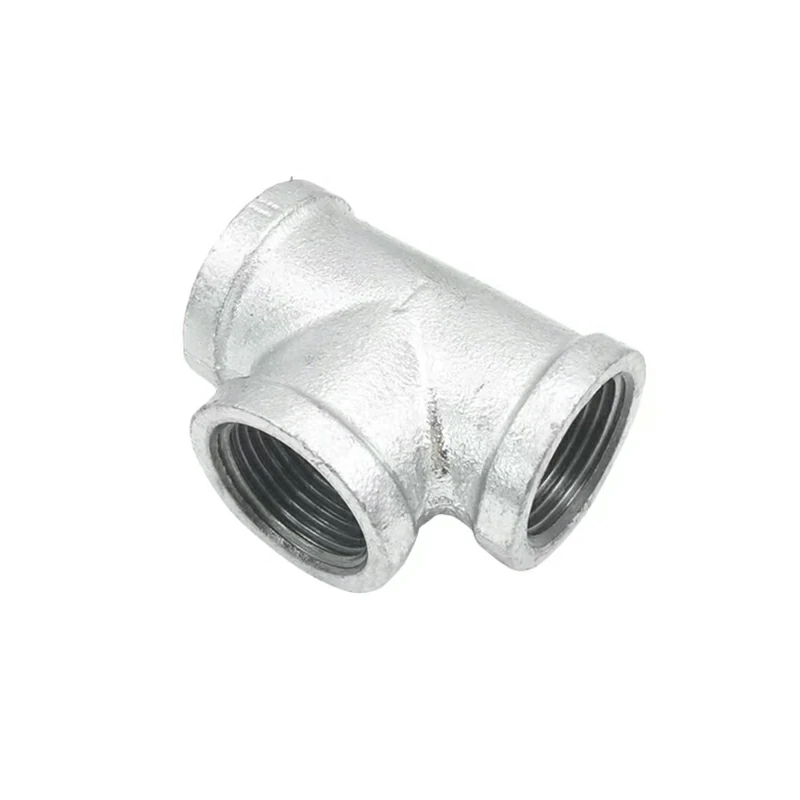Grooved fittings ensure proper sealing and joint integrity over time through several design features and sealing mechanisms:
- Groove Design: Grooved fittings feature precision-engineered grooves that provide a secure and consistent interface for sealing gaskets. These grooves are machined or cast into the fitting’s surface to accommodate the gasket material and ensure uniform compression and sealing around the entire circumference of the pipe.
- Gasket Material: Grooved fittings utilize elastomeric gaskets made from materials such as EPDM, nitrile rubber, or silicone, which offer excellent sealing properties and resistance to environmental factors such as temperature, pressure, and chemical exposure. These gaskets form a resilient seal when compressed between the grooved surfaces of the fitting and the pipe.
- Compression Sealing: During installation, the gasket within the grooved fitting is compressed between the mating grooves of the fitting and the grooved end of the pipe. This compression creates a tight and reliable seal that prevents fluid leakage or ingress of contaminants, ensuring joint integrity over time.
- Self-Retained Gaskets: Many grooved fittings feature self-retained gaskets that remain securely in place within the fitting, even during handling, transportation, or installation. This prevents misalignment or displacement of the gasket, ensuring consistent sealing performance and joint integrity.
- Sealing Surface Preparation: Prior to installation, grooved fittings and pipe ends are cleaned and inspected to ensure proper alignment and surface preparation for sealing. Any debris, rust, or imperfections that could compromise the sealing integrity are removed to facilitate a secure and leak-tight connection.
- Pressure Responsive Sealing: Grooved fittings are designed to provide pressure-responsive sealing, meaning that as internal pressure within the piping system increases, the gasket is compressed further, enhancing the seal’s integrity and resistance to leakage. grooved fittings manufacturers This ensures reliable performance under varying pressure conditions over time.
- Long-Term Durability: Grooved fittings are manufactured from durable materials such as ductile iron, stainless steel, or engineered polymers, which offer excellent resistance to corrosion, abrasion, and mechanical stress. This ensures long-term durability and reliability of the fittings and their sealing mechanisms, even in demanding environments.
- Quality Assurance: Grooved fittings undergo stringent quality control measures during manufacturing to ensure adherence to industry standards and specifications. Quality assurance processes verify dimensional accuracy, material integrity, and sealing performance to guarantee the reliability of the fittings over time.
By incorporating these features and sealing mechanisms, grooved fittings ensure proper sealing and joint integrity over time, providing leak-tight connections that withstand the rigors of various piping applications and operating conditions. Regular inspection, maintenance, and adherence to installation best practices further contribute to the long-term performance and reliability of grooved fitting installations.
What types of gaskets are used in grooved fittings and what are their characteristics?
Several types of gaskets are commonly used in grooved fittings, each with distinct characteristics that suit specific applications and operating conditions.
Here are some of the most common types of gaskets used in grooved fittings and their characteristics:
- EPDM (Ethylene Propylene Diene Monomer):
- Characteristics: EPDM gaskets are highly versatile and widely used in grooved fittings due to their excellent resistance to weathering, ozone, UV radiation, and chemicals. They provide a reliable seal over a wide temperature range and exhibit good compression set resistance, ensuring long-term durability and sealing performance.
- Nitrile Rubber (NBR):
- Characteristics: Nitrile rubber gaskets offer excellent oil and fuel resistance, making them suitable for applications involving petroleum-based fluids. They provide a robust seal against water, hydraulic fluids, and mild chemicals, and they exhibit good abrasion resistance and elasticity, ensuring reliable sealing performance in demanding environments.
- Silicone:
- Characteristics: Silicone gaskets are known for their exceptional temperature resistance, flexibility, and resilience over a wide range of temperatures (-60°C to 230°C or higher). They exhibit excellent UV resistance, weathering resistance, and electrical insulation properties, making them suitable for high-temperature and outdoor applications where exposure to extreme conditions is expected.
- FKM (Fluoroelastomer):
- Characteristics: FKM gaskets, also known as Viton® gaskets, offer superior chemical resistance, high-temperature resistance, and low compression set properties. They are commonly used in applications involving aggressive chemicals, fuels, oils, and high-temperature fluids. pipe fitting manufacturer FKM gaskets provide excellent sealing performance over a broad temperature range (-20°C to 200°C or higher) and exhibit excellent resistance to compression, degradation, and fluid permeation.
- Neoprene:
- Characteristics: Neoprene gaskets are known for their excellent resistance to oil, grease, ozone, and weathering, making them suitable for outdoor and marine applications. They provide a reliable seal against water, air, and mild chemicals and exhibit good flexibility, resilience, and durability in a variety of environments.
- PTFE (Polytetrafluoroethylene):
- Characteristics: PTFE gaskets, also known as Teflon® gaskets, offer exceptional chemical resistance, low friction, and high-temperature resistance. They provide a reliable seal against aggressive chemicals, acids, and solvents and exhibit low compression set, excellent dimensional stability, and non-stick properties. PTFE gaskets are commonly used in applications requiring superior chemical resistance and purity.
- Buna-N (Nitrile Butadiene Rubber):
- Characteristics: Buna-N gaskets offer excellent oil resistance, abrasion resistance, and low-temperature flexibility. They provide a reliable seal against petroleum-based fluids, hydraulic oils, and water and exhibit good compression set resistance, resilience, and durability in a variety of industrial applications.
These are just a few examples of the types of gaskets used in grooved fittings, and there are many other specialized gasket materials available to suit specific application requirements. When selecting a gasket for a grooved fitting application, it’s essential to consider factors such as chemical compatibility, temperature range, pressure rating, environmental conditions, and sealing performance to ensure optimal performance and reliability.
